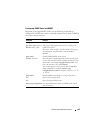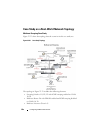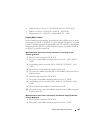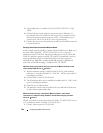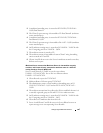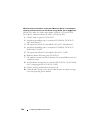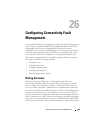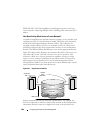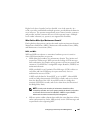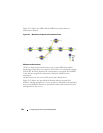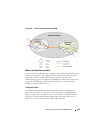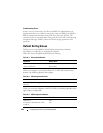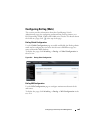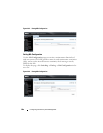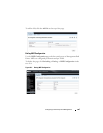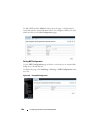
Configuring Connectivity Fault Management 861
Higher levels have a broader, but less detailed, view of the network. As a
result, a provider could include multiple operators, provided that the domains
never intersect. The operator transparently passes frames from the customer
and provider, and the customer does not see the operator frames. Multiple
levels within a domain (say, operator) are supported for flexibility.
What Entities Make Up a Maintenance Domain?
Dot1ag defines three primary entities that make up the maintenance domain:
Maintenance End Points (MEPs), Maintenance Intermediate Points (MIPs),
and Maintenance Associations (MAs).
MEPs, and MIPs
MEPs and MIPs are software or sometimes hardware per-service entities
where CFM functionalities are present.
• MEPs define the boundary of a maintenance domain. They initiate and
respond to CFM messages. MEPs prevent the leaking of CFM messages
between domains (for example, among operators or between operators and
customers). Each MEP has a configurable unique identifier (MEPID) in a
maintenance domain.
MEPs periodically issue Continuity Check Messages (CCM) to discover
each other and issue SNMP traps to report connectivity losses or
malformed or incorrect CCMs.
A MEP can be defined as “down MEP” or an “up MEP”. A down MEPs
reside in a bridge that transmits CFM PDUs towards, and receives them
from, the direction of the LAN. An up MEP resides in a bridge that
transmits CFM PDUs towards, and receives them from, the direction of
the Bridge Relay Entity.
• MIPs are entities within a domain that enable the outer domain to achieve
end-to-end connectivity checks. MIPs passively receive CFM messages and
respond back to the originating MEP.
NOTE: An entity at the boundary of maintenance domain that offers
connectivity and other services to systems outside the domain is referred to
as a Domain Service Access Point (DoSAP). A MEP is a type of DoSAP
whose services relate to connectivity fault management.



